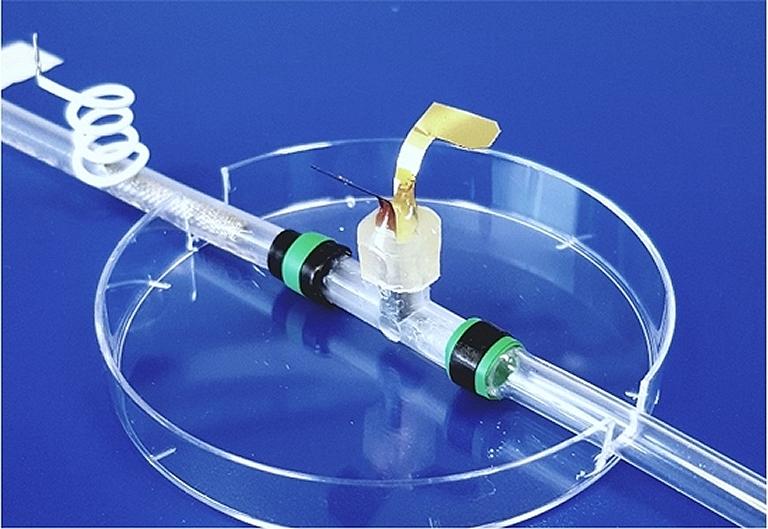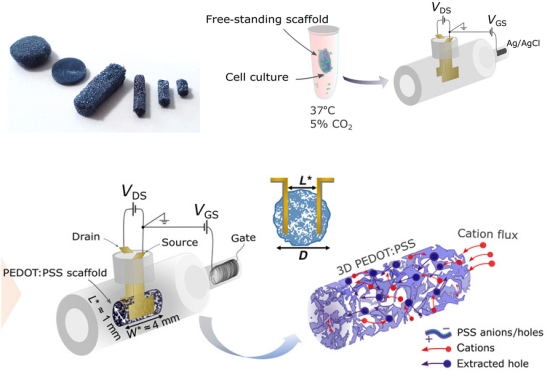TECH

Organic bioelectronic transistor
A three-dimensional electrochemical transistor mounted together with live cells allows continuous monitoring of these cells in real time to develop new treatments for diseases and reduce the number of animals used in scientific research.The organic bioelectronic device, which incorporates cells inside a transistor made from a spongy material, inspired by the native structure of living tissue, allows cells and tissues to be studied in innovative ways because it allows cells to grow in three dimensions, mimicking more precisely how the cells grow in the body.It can be modified to generate various types of organoids, better known as "organ on a chip", used to mimic how drugs and treatments affect the human body. These organs on a chip are made with cultures of human cells, which is far superior to the tests in animals. And, unlike the famous Petri plates, glass plates that scientists use in cell cultures, they are 3D, more accurately representing the three-dimensional environments native to human cells.Although these 3D cultures have been generated for several years, the technology to accurately assess their real-time functionality has not yet been well developed.This is where the "tubistor" - a transistor in a tube - created at the University of Cambridge by Charalampos Pitsalidis and a team from Saudi Arabia, France, Greece and the United Kingdom.
Tubistor
The tubing is based on an electrically conductive polymer sponge, configured to function as an electrochemical transistor. The cells are grown inside the sponge, which also serves as a carrier, and the whole device is then placed inside a test tube, through which it is possible to provide the nutrients necessary for the cells to survive.The organic bioelectronic transistor uses a semiconductor film that is in contact with the biological medium, which acts as electrolyte. Its electrical potential is modulated by an organic electrode, driven by a very low voltage (0.2 to 0.6 volt). The operation of the transistor depends on the penetration of electrolyte ions into the electrode, which in turn changes the conductivity of the channel, generating the output signal.
Organ on a chip
The use of the soft sponge electrode, instead of the rigid metal electrodes of traditional transistors, creates a more natural environment for cells and is critical to the success of chip-based organ technology, allowing intrinsically to measure the response of an organoid to different stimuli.The organs on a chip created so far need to be completely disassembled for monitoring cell function. Because the tubistor allows for continuous monitoring in real time it is possible to carry out long term experiments on the effects of various diseases and potential treatments."With this system, we can monitor tissue growth and health in response to external drugs or toxins. In addition to toxicology tests, we can also induce a particular disease in the tissue and study the main mechanisms involved in this disease, or discover the treatments certain, "said Pitsalidis.
Bibliography:Transistor in a tube: A route to three-dimensional bioelectronics
C. Pitsalidis, M. P. Ferro, D. Iandolo, L. Tzounis, S. Inal, R. M. OwensScience Advances

No comments:
Post a Comment